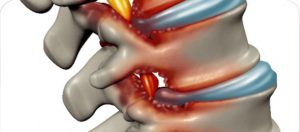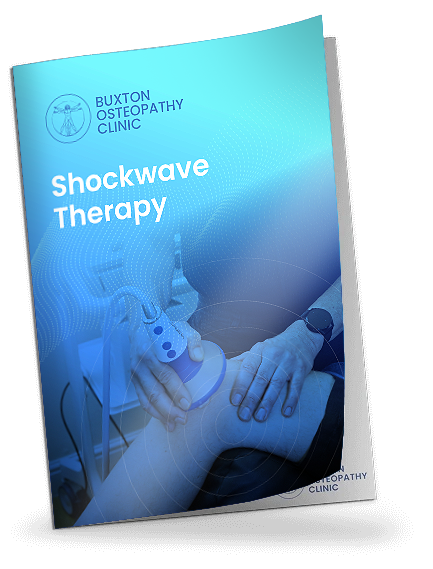Lower back joint pain is one of the most common—and often most disruptive—musculoskeletal problems affecting people today. Whether it presents as a sharp, localised pain when bending or a deep, persistent ache that limits daily activities, lower back joint pain can have a profound impact on movement, confidence, and overall quality of life. What many people don’t realise is that the lower back relies on a delicate balance between the vertebrae, facet joints, discs, muscles, and surrounding connective tissues. When even one component becomes irritated or dysfunctional, it can quickly lead to pain, stiffness, inflammation, and restricted mobility.
The joints of the lower spine—particularly the facet joints—play a crucial role in guiding and stabilising movement. When these joints become compressed, inflamed, or overloaded due to posture, repetitive strain, degeneration, or injury, pain is often the result. Understanding exactly which joint structures are involved, and why they are under strain, is essential for achieving lasting relief. That’s where a specialist, evidence-based approach becomes invaluable.
At Buxton & Bakewell Osteopathy Clinic, we have become recognised as leading experts in the diagnosis and treatment of lower back pain across Derbyshire and the Peak District. Our highly skilled osteopaths combine detailed clinical assessment with advanced diagnostic reasoning to identify the true source of pain—whether it’s the facet joints, sacroiliac joints, discs, or associated soft tissues.
What sets our clinics apart is our integration of cutting-edge technology with hands-on osteopathic expertise. Treatments such as IDD Therapy (non-surgical spinal decompression) and Focused and Radial Shockwave Therapy allow us to target joint dysfunction, reduce inflammation, decompress irritated nerves, and stimulate deep tissue healing more effectively than manual therapy alone.
If you’re experiencing persistent or recurring lower back joint pain, this guide will help you understand the causes, symptoms, and the most effective treatment options—along with why our clinic is the go-to destination for long-term relief and recovery.

FACET JOINT PAIN
Typical symptoms: Local sharp spinal pain with muscle guarding that can refer into the mid-back, lower back and groin, hip and sometimes upper thigh. This pain usually appears with specific movements (such as twisting and leaning back).
The correct term for the joints in the spine is ‘facet joints’. Each vertebra has four facet joints (imagine the vertebra as a square with one joint in each corner). There are some vertebra in the neck that are unique. C1 and C2 (called the atlas and axis respectively), are specialised to allow for the movement and rotation of the head.
All the facet joints link the spine together and are important for preventing excessive rotational and twisting forces in the spine which would otherwise damage the discs. They also share some of the load-bearing responsibility of the spine.

When there is a loss of mobility in the spine, this typically means the facet joints bear a greater load than normal. This is especially true if there is some imbalance in the body and one side of the spine takes more strain than the other.
This can occur for all sorts of reasons such as repetitive strain injury through repeated lifting, or one single lift in an awkward position, or through sudden trauma such as slipping on ice. Common day-to-day examples are digging in the garden, hoovering in the home or repeated manual handling events in the workplace.
It is also important to remember that putting the spine under sustained constant load over time is also detrimental. An example would be driving over long distances or the cumulative effects of sitting for long periods during long haul flights.
People usually experience sharp pain for particular movements such as leaning back or twisting or bending forwards. Pain can be unilateral or bilateral and can sometimes refer into the upper buttock region.
FACET JOINT PAIN & DEGENERATION
Facet joints are also subject to wear and tear and this gives rise to another set of conditions. Just like the vertebra the body reacts to the increased load on the facet joints by laying down more bone in the joint margins (this is called facet joint arthropathy).
This process is accentuated by degeneration of the intervertebral disc which shrink as we age, thus imposing greater load on the spinal joints. In some cases, the extra bone can narrow the gap where the nerves exit the spine and if the bone pinches against the bone (referred to as lateral stenosis as seen under spinal stenosis), it can cause referred pain into the leg.
The picture below demonstrated another example of hypertrophied facet joints.

One of the outcomes of degeneration of the facet joints and the discs can sometimes be a degenerative spondylolisthesis and this usually occurs at L3/L4 or L4/L5.
The word spondylolisthesis comes from a Latin root and means ‘slipped vertebral body’. This occurs because of a fracture in a part of the vertebra known as the ‘pars interarticularis’. This is more common if you are over 50 years of age and more common in females than males (3:1).
The term spondylolysis refers to a non-displaced fracture of the pars interarticularis as seen in the diagram below. However, if the spondylolysis becomes unstable and slips forward it is termed as a spondylolisthesis.

Osteopathy can treat this effectively by using gentle techniques to help release the joint concerned and relieve muscle tension.
OTHER IMPORTANT JOINTS; THE SACROILIAC JOINTS
Typical symptoms: Lower back, hip and groin pain that can range from sharp shooting pains to stabbing pains that worsen for activity.
The pelvis comprises two large wing-like bones called ilea and a smaller triangular shaped bone called the sacrum. The sacrum fits in between the ilea at the base of your lower back and attaches to the bottom two joints of the spine. The sacroiliac (SI) joints are formed by the connection of the sacrum to the right and left iliac bones.

While the vertebral joints in the spine have a reasonable degree of movement the sacrum is made up of five vertebrae that are completely fused together and therefore have no natural movement.
The sacrum and the two large pelvic iliac bones are held together by an extensive collection of strong ligaments. These can be damaged and are a potential source of lower back pain. Some studies suggest that the prevalence of SI joint pain accounts for up to 20% of chronic lower back pain presentations.
Sacroiliac joints are also subject to degeneration and can subsequently cause diffuse pain in the lower back or the hips. Pain may also be present in the groin and thighs.
OTHER IMPORTANT JOINTS; RIBS JOINTS
Typical symptoms: Pain between the shoulder blades that is a burning, sharp or stabbing and can refer to the front of your chest. Taking a deep breath or coughing/sneezing can make your rib pain worse.
Your rib cage is made up of twelve pairs of ribs. All twelve ribs attach to the middle of your back (or thoracic spine), but only the top seven ribs form your rib cage and attach to the breastbone on the front of your chest.
The ribs essentially act as a mean of protecting and guarding all your vital internal organs. Their other function is to lift and drop as part of inhalation and exhalation, which is why rib pain often results in pain when breathing deeply or coughing or sneezing. The lower ribs can be a cause of mid and lower back pain and similarly the upper ribs can refer pain in the upper thoracic regions.
For each rib there are two joints that attach to any specific vertebra in the thoracic spine. These joints are called the costotransverse or costovertebral joints. The ribs are also anchored by the bodies of the vertebra to which they attach and the intervertebral discs.

These joints can be a common cause of pain. Common causes are a singular traumatic event like a sudden impact in contact sports or as part of a symptom pattern resulting from repetitive strain injury.
It is also worth mentioning that very occasionally we can have an extra rib at the top of the spine (called a cervical rib) that can irritate delicate nerves and vascular structures in the surrounding tissue.
OTHER IMPORTANT JOINTS; THE COCCYX
Typical symptoms: Pain at the base of the spine that is dull and achy but sharper for activities such as sitting. Defecation can be painful.
The coccyx (or tailbone) is a very small bone that joins the bottom of the sacrum (the sacrum is triangular bone that is part of the pelvis) at a joint called the sacrococcygeal symphysis. This permits limited movement between the sacrum and the coccyx.
The coccyx comprises three or more very small bones fused together. A fall on the tailbone can inflame the ligaments or injure the coccyx or the coccygeal attachment to the sacrum.
During pregnancy or childbirth, the baby’s head passes over the top of the coccyx, and the pressure created against the coccyx can sometimes affect the coccyx.






